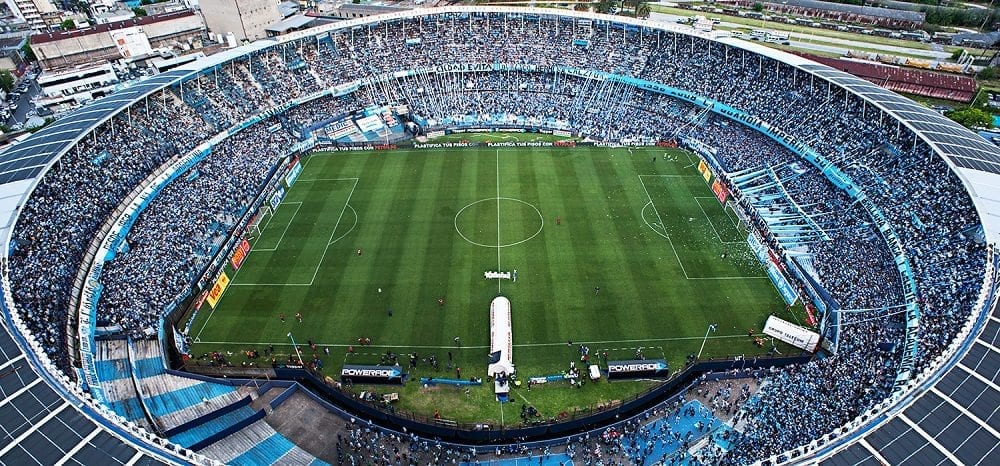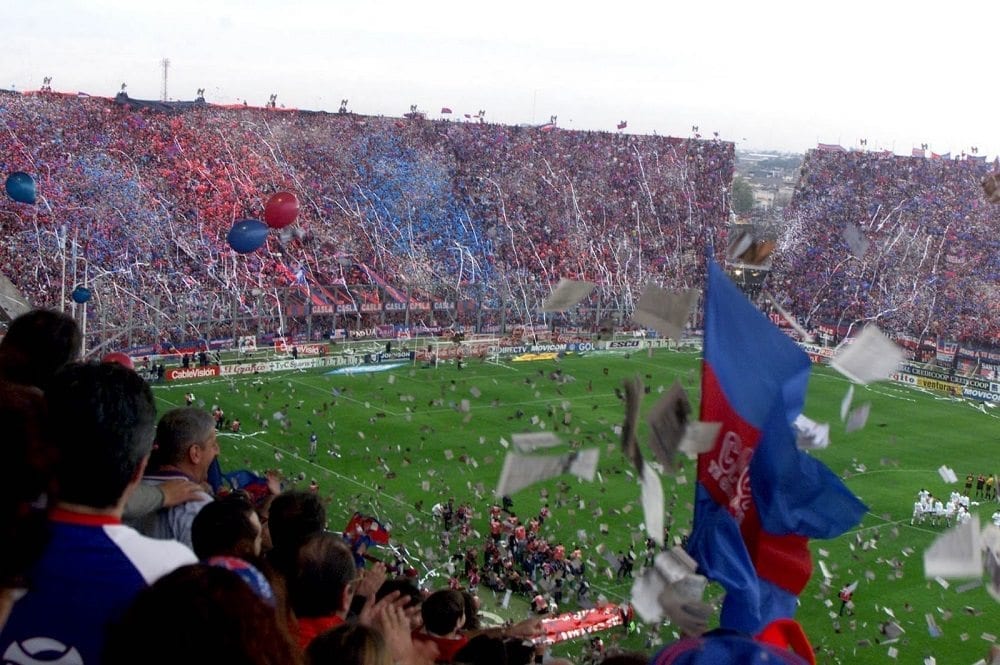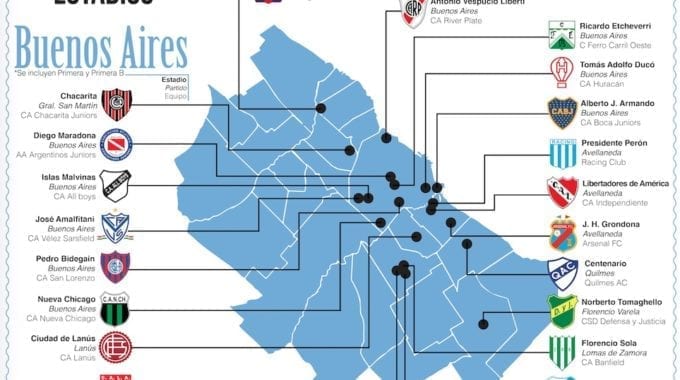Buenos Aires Football Stadiums
River Plate
Estadio Monumental Antonio Vespucio Liberti (or simply El Monumental)
Address: Av. Pres. Figueroa Alcorta 7597, Nuñez
El Monumental is considered to be Argentina’s national stadium because it is usually the venue of choice to host major events. Besides being the home of River Plate, it is also used for many important sporting events, such as when the National Argentina Football Team (La Selección) plays as host at home for World Cup qualification games. In the upcoming 2018 Summer Youth Olympics, which Buenos Aires will be the host city, the Open and Closing Ceremonies will take place at El Monumental. Given it’s easily accessible location in the nice Buenos Aires neighborhood, Nuñez, and it’s size being the biggest in the country with a capacity of 70,000+ , it is also the venue for big concerts. Most of the international superstar performers who came to Buenos Aires held their shows at this stadium. The recent ones who have come through town include Coldplay, Roger Waters, Madonna, Lady Gaga, Miley Cyprus etc.
Boca Juniors
La Bombonera Estadio Alberto J. Armando (formerly known as Estadio Camilo Cichero)
Address: Brandsen 805, La Boca
More popularly known as La Bombonera (the Chocolate Box) owing to it’s shape, where one side had to be built ‘flat’ due to limited space. The stadium is a well-known one because it’s owned by one of the most famous Argentine football clubs, Boca Juniors. It is because of it’s architectural uniqueness, it creates an unintentional amazing acoustic effect where you can actually feel the vibration when fans sing and jump in unison. Thus, offering an exceptional atmosphere unlike any other when watching a game at La Bombonera. However, due to football club politics and increased insecurity at football games, it’s getting more and more difficult to get tickets to see a game, especially Boca home games, at La Bombonera without having to pay a high fee and/or the connections to find one.
Vélez Sarsfield
Estadio José Amalfitani
Address: Av Juan B. Justo 9200, Liniers
This stadium is the home of Vélez Sarsfield, an Argentine First Division football club, and is also the national stadium for Los Pumas, the Argentina National Rugby Union Team. It is widely called as El Fortín (The Small Fort). The stadium was originally built in wood in the early 40’s, but it was rebuilt in cement a few years later and further expanded to be used in the 1978 FIFA World Cup when Argentina was the host. International concerts were held occasionally at this venue. Rod Stewart, Elton John, Bon Jovi, One Direction were some of the visiting performers.


San Lorenzo de Almagro
Estadio Pedro Bidegain
Address: Av. Perito Moreno y Varela, Bajo Flores
More widely known as El Nuevo Gasómetro (the new gas tank), it’s the new home of San Lorenzo team since 1993. They are a popular team locally but not much known in the international stage until recently because of Pope Francisco, who is from the neighborhood and is a supporter of San Lorenzo. The team is actually from Almagro and their original stadium, Estadio Gasómetro, was located in Boedo (just south of Almagro). However, in 1979 it was expropriated by the military government and the land was then sold to French retailer Carrefour. A huge Carrefour supermarket has taken up the lot ever since. For 14 years, San Lorenzo didn’t have a ‘home’ and had to move around playing at different stadiums until they managed to build El Nuevo Gasómetro not too far from their origin. This newly built stadium has the largest pitch in the country and it is known for the only stadium that has a real tunnel for the players to enter the pitch rather than through an inflatable one.


Behind the Scenes: The Lifeblood of the Stadiums
Every major stadium in the world has a pulse that resonates beyond the matches they host. The same is true for Argentine football stadiums. Let’s dive deeper into the soul of these iconic arenas.
The Passion of Fans
The passion of Argentine football fans is legendary. Their fervor, chants, and synchronized movements create an atmosphere that is electric. Each stadium, be it El Monumental or La Bombonera, reverberates with the collective spirit of its fans. The ultras or the hardcore fans of each club play a significant role in setting the tone. They choreograph chants, design tifos (giant displays), and often ignite the entire stadium with their undying passion.
Culinary Delights around the Stadiums
Stadiums are not just about the sport; they are also about the culinary experiences that surround them. Venture around the stadiums on match days and you’ll find a plethora of street food vendors. From classic Argentine choripán (sausage sandwiches) to bondiolas (pork shoulder sandwiches), and from empanadas to alfajores, the area becomes a food lover’s paradise.
Memorabilia and Merchandise
Around these stadiums, especially on match days, you can find a variety of stalls selling club memorabilia. From jerseys, scarves, and hats to posters, keychains, and flags, fans can buy artifacts to showcase their loyalty. Each item tells a story, each color represents a legacy.
The Influence on Local Culture
Football in Argentina is not just a sport; it’s a way of life. It influences music, dance, art, and literature. Many musicians have written songs dedicated to their favorite teams. Street art and murals depicting football legends or significant moments in a club’s history can be found around the neighborhoods of these stadiums.
Guided Tours and Museums
For those who want an in-depth understanding of the club’s history and achievements, these stadiums often offer guided tours. Some of them, like El Monumental, house museums that showcase trophies, memorable jerseys, and other artifacts that chronicle the club’s journey over the years.
Conclusion
Argentine football stadiums are not just structures made of bricks and cement. They are temples of passion, history, and culture. Each corner echoes with tales of legendary matches, iconic goals, and unforgettable moments. Every seat has witnessed emotions ranging from the ecstasy of victory to the heartbreak of defeat. Whether you are a football enthusiast or someone looking to experience Argentine culture, a visit to these stadiums offers a unique and unforgettable experience. So, the next time you’re in Buenos Aires, don’t just watch a match; immerse yourself in the rich tapestry of stories these stadiums have to offer.




